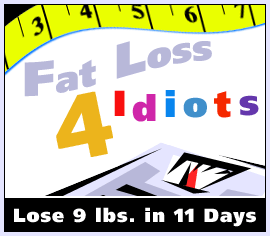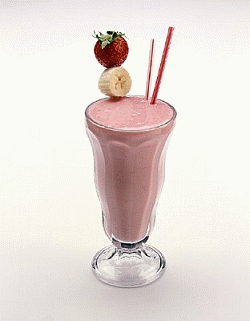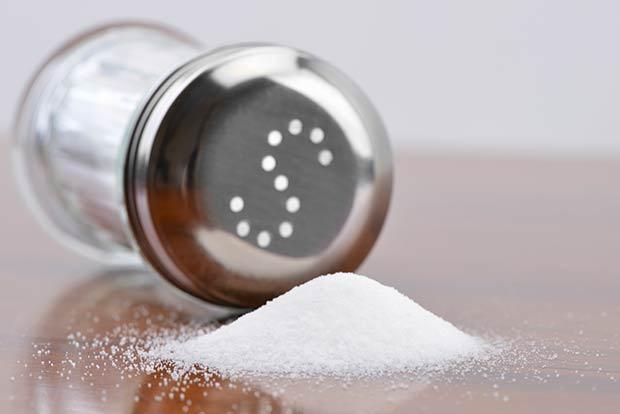wikiHow to Lose Weight Gradually
Although there are a variety of diets that promise fast and quick weight loss, studies have shown that gradual weight loss is the preferred way to go. When you lose weight slowly over a longer period of time, you're more like to adopt positive lifestyle changes and be able to keep your weight off long-term.[1] In addition, losing weight gradually is considered safe, appropriate and healthy for most people. Change your diet, exercise habits and lifestyle to help you lose weight safely. You'll feel better and be able to keep your weight off long-term.
Steps
Part 1 Changing Your Diet Gradually
-
1
Cut down on portion sizes. One of the things you may need to change about your diet is how much you eat per meal. Large portions may mean too many calories and weight gain. Cut back on portions to help you gradually lose weight.[2]
- Many health professionals will tell you to eat until you're "satisfied" not full. This is a hard area to detect, but with some practice you can stop eating at just the right time.
- Satisfied is a lack of hunger, a slight disinterest in your meal and a feeling that the food you've eaten will hold you for a few hours.[3]
- Full feels like a slight to large stretching sensation in your stomach, the thought that those last few bites were too much or you've had second portions.[4]
- Eat your meal slowly. Taking your time with your meal will help your brain and stomach communicate that you're satisfied and help you stop before you're full.[5]
- Schedule meals so that you have an appetite, but are not starving, when you do eat. Starting a meal when you are super hungry, or have been starving yourself all day, may lead to overeating.
-
2
Cut out 500 calories daily. In addition to eating smaller portions, you'll need to be mindful of your total calorie intake. Too many calories daily causes weight gain.
- It's typically recommended to cut out about 500 calories daily. This coincides with your goal to lose weight gradually. A 500 calorie deficit each day will result in about 1-2 pounds of weight loss each week.[6]
- You can either cut out 500 calories from your food or burn off 500 calories with exercise. The best is to do a combination of both.[7]
- Try keeping a food journal or using a food journaling app on your smart phone. This may make it easier to track your foods and total calories each day.
-
3
Fill up on fruits and vegetables. Both fruits and vegetables are low calorie foods that can help support a slow and gradual weight loss.[8][9]
- The USDA recommends that you make half of your plate a fruit or vegetable. These highly nutritious foods can bulk up your meals without adding too many calories to your day. You may feel satisfied on a lower calorie amount due to the higher fruit and vegetable content.
- Try to include at least 1-2 servings of these foods per meal. Aim for 1/2 cup (170 grams) or 1 small piece of fruit[10] or 1 cup (340 grams) of vegetables or 2 cups (28 grams) of leafy greens[11].
-
4
Go for lean protein. It's important to include protein every day for a balanced diet. However, studies have shown that lean protein aids in weight loss and helps maintain your weight long-term.[12]
- Protein is an essential nutrient in your diet. Studies have also shown that it's very satisfying and satiating to your body. You may feel less hunger throughout the day when you eat regular servings of protein.[13]
- Go for lean sources of protein. They are typically lower in calories and fat and will support your desire to lose weight slowly. Also stick to appropriate portion sizes of protein. Measure out 3-4 oz of protein or about 1/2 cup.
- Lean protein sources include: eggs, poultry, seafood, lean pork, legumes, tofu and lean beef.
-
5
Add in 100% whole grains. Many diets avoid grains and other carb-rich foods. However, including a serving or two of 100% whole grains can still allow you to lose weight gradually.
- Whole grains are minimally processed and contain every part of the grain: the germ, bran and endosperm. These parts together make grains higher in fiber, protein and other nutrients.[14]
- Examples of whole grains include: brown rice, quinoa, oats, 100% whole wheat bread. Stick to the appropriate portion size of 1 oz or 1/2 cup of grains per serving.[15] This amounts to one slice of bread, half of a bun, and half a cup or 125 milliliters of rice, pasta, or quinoa.
- Try to limit or avoid more refined or processed grains since these are less nutritious. Items like white bread, white rice or plain pasta are more refined.
-
6
Drink enough clear fluids each day. Water is another essential nutrient to your diet. Being adequately hydrated helps keep your body healthy, but it can also support gradual weight loss.
- Water is involved in a variety of functions in your body including lubricating joints, maintaining blood pressure and protecting organs.[16] In addition, being adequately hydrated can help you feel more satisfied throughout the day.
- Try to stick to no or low-calorie, decaffeinated beverages. Try water, flavored water, unsweetened decaf coffee and tea.
- Most health professionals will recommend getting a minimum of 8 glasses of water daily. However, depending on your age, gender and activity level, you may need up to 13 glasses daily.[17]
-
7
Limit snacks and treats. Whenever you're trying to lose weight, you should try to limit any excess foods and snacks. Although they can be a part of your diet, they should only be included occasionally.
- Snacks can provide you with a boost of energy and an extra shot of nutrition. However if you snack when you're bored, stressed or just craving certain foods, this may lead to some weight gain over time.
- Make snacks count. Only snack if you're truly hungry. In addition, only snack if your next meal is more than an hour away. If you're feeling hungry, but dinner is in 30 minutes, drink some water and wait until dinner to eat.
- Also limit the calorie content of snacks. Keeping snacks to 100-150 calories per snack can help make sure you stick to your total calorie intake and support your weight loss.[18]
- Appropriate snack examples can include: 3 oz or 85 grams beef jerky, an apple with a cheese stick, about 10 almonds, or 1/2 cup or 113 grams of cottage cheese.
Part 2 Adding In Physical Activity
-
1
Aim for 2 1/2 hours of exercise weekly. A great addition to a healthy diet is exercise. Cardio in particular helps your body burn calories and support a gradual weight loss.[19]
- Aerobic exercises don't cause a lot of weight loss alone. It's when combined with diet that you see the best results for weight loss.
- Health professionals recommend that you include at least 2 1/2 hours or about 150 minutes of moderate intensity cardio activities each week.[20]
- This amount of exercise comes with a lot of health benefits outside of weight loss. It can also improve your sleep and mood and decrease your risk of heart disease, stroke and diabetes.[21]
- Try activities like: walking, jogging, hiking, swimming or doing an aerobics class.
-
2
Start including regular strength training. In addition to cardio, it's recommended to include a few days of strength training. This type of exercise can also support gradual weight loss.
- Weight training or resistance exercises also do not cause a lot of weight loss by themselves. However, they can increase your lean muscle mass which may help support a faster metabolism in the future and increase your body's ability to burn calories.[22]
- Aim to include about 1-3 days of strength training each week. Try to work every major muscle group and do your exercises for at least 20 minutes per session.[23]
- The following activities can count as weight training: weight lifting, using weight machines, or doing isometric exercises.
-
3
Increase your lifestyle activity. Another great way to help you burn more calories and gradually lose weight is by increasing your lifestyle activity.
- Lifestyle or baseline activities are things you do in your typical day.[24] They could be anything - raking leaves, gardening, mopping the floor or even walking to and from your car. These activities do not burn many calories at one time, but added up together at the end of the day can make a significant impact on your health and weight.
- You can also do yoga or pilates, both of which are good for posture, flexibility, improving balance, and mind-body connection.
- Think about your typical day and how much you move and walk around. Are there ways you can add more movement or steps to your day? Try parking further away, taking the stairs more often, going for short walk breaks at work or doing exercises during commercial breaks while you watch TV.
Part 3 Maintaining Weight Loss
-
1
Talk to your doctor. Whenever you're trying to lose weight or make changes to your diet or exercise plan, you should talk to your doctor first.
- Your doctor will be able to tell you whether or not weight loss is safe or appropriate for you. He or she may also be able to give you additional guidance or advice on how much weight to lose and how to go about losing it.
- Also talk to your doctor about what you plan on changing regarding your diet or exercise routine. Make sure that he or she thinks that's safe for you.
- You may also want to consider asking your doctor for a referral or recommendation to a local registered dietitian. These nutrition professionals are experts in weight loss and may be able to help you lose the extra weight.
-
2
Weigh yourself regularly. Many studies show that regular weigh-ins can help you lose weight, stay accountable and even maintain your weight loss long-term.[25]
- Since regular and consistent weigh-ins may help you lose weight, it's ideal to weigh yourself at least once a week. You can even increase your weigh-ins to 2 times weekly.
- It's not typically advisable to weigh yourself daily as you will day to day fluctuations. These normal and expected fluctuations may discourage or frustrate you.[26] Stick to 1-2 weigh-ins weekly to see an accurate reflection of your weight loss trend.
- Also try to weigh yourself at the same time of day and in the same clothes. This again will help with the consistency and accuracy of your weigh-ins.
-
3
Keep a journal. Keeping a journal can be a great tool for you when you're trying to lose weight. Many studies show that journaling can help you stay accountable with your weight loss plan.[27]
- Try keeping track of your weights and overall progress towards your goal. When you keep track of your weight you'll be able to pick up on any unwanted trends (like a weight gain). Then you can make any adjustments you need to your diet or exercise routine.
- It may also be helpful to keep a food journal. Studies have shown that regular food journaling can keep you accountable with your diet.[28] It can also serve as a great resource if you find you're not losing weight or gaining weight.
- Lastly, you might find it helpful to journal about your exercise. Keep notes on when you exercised, for how long and what exercise you did.
-
Good Solid Advice About Weight Loss That Anyone Can Use
TIP! One great tip to lose weight is doing your cardio workou
-
Weight Loss Tips That Will Give You Back Your Figure
Weight loss is the goal of many, but many fail to question the advic
-
How to Use Acupressure for Weight Loss
In traditional Chinese acupressure, firm pressure is placed on severa
-
Weight Loss Naturally - Go Natural
It is a fact that most people want to lose weight and with the numero
-
Quick Weight Loss Diets Do They Really Work
While you read these words, right now-- will you be getting the most
-
How to Diet to Lose Weight as a Teenage Girl
Many teenagers want to lose weight but dont know how to. Often times
- DON'T MISS
- Tips For Losing Weight Fast
- Fight Weight Loss Hurdles And Say Hello To A Healthier You
- Sleep Better And Safer With These Sleep Apnea Tips
- Tips For Weight Loss
- How To Organize Your Garage—And Your Life—In Just 10 Minutes A Day
- Loving Spoonfuls
- Who Said Weight Loss Has To Be Hard?
- Sensible Tips On The Fight Against Cancer
- Intelligent Advice For Safe And Effective Weight Loss
- wikiHow to Use Acai Berry for Weight Loss




